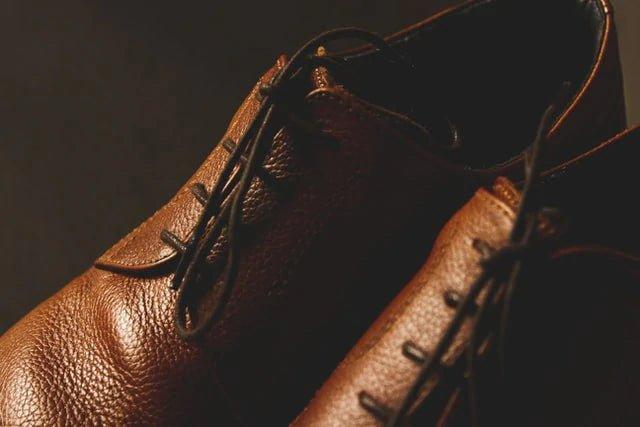
A Guide to the Pros and Cons of Bison Leather Boots
Share
Bison Leather Boots are fashionable and durable. From ankle boots to over-the-knee boots, There is a style for everyone, but are they good enough?
The Pros and Cons of Bison Leather Boots
Although many of us consider bison and buffalo the same species, they are not. That may be because the North American bison is often called a buffalo. The actual buffalo leather is mainly derived from two Asian buffalo species (African Cape Buffalo and Asian Water Buffalo), while most bison leather in the U.S. comes from the North American bison.
On the other hand, both bison and buffalo leather are durable and tick, making them ideal for leather products that involve rough usage, such as boots. All water buffalo products and water buffalo stripes are famous for their strength and unique grain pattern.
Why Use Leather for Boots?
Cowhide is probably the most often used leather for all footwear, not just boots. It also often represents the standard by which most leathers are compared. Cowhide leather is considered extremely strong, durable, difficult to puncture, as well as flexible. These characteristics, among others, made cowhide leather a traditional leather used for cowboy boots since these boots were worn in a harsh environment.
Bison leather boots are also considered durable and strong. But how durable leather can be, depends on its thickness. Bison leather is ticker than cowhide leather because it is not as stretched while processing. In other words, bison leather remains much ticker and can last longer than cow leather.
What Types of Leather are Used for Cowboy Boots?
In addition to cowhide leather, cowboy boots can also be made from ostrich leather, one of the most popular exotic leathers, goat leather, and elephant leather. However, all boot leathers have their pros and cons.
For example, although elephant skin boots are extremely tough, scuff resistant, and an excellent choice for work boots, they require more care. Snakeskin boots also need to be cared for and maintained to a higher standard, but they offer a unique look, ideal for everyday wear in an urban environment.
What is the Preferred Leather for Boots?
Most often, bison leather hides are processed by vegetable tanning – an organic tanning process that uses natural dyes, vegetable-based natural oils, and waxes to process the raw animal hides. The tanning process is necessary to transform hides into leather.
Some of the highest quality leather products are processed by vegetable tanning. Although vegetable tanned leather is not treated with potentially harmful chemicals, they are also not waterproof and tend to stain. Like any other real and high-quality leather, bison leather is not entirely waterproof as well.
Leather Quality Chart: What is a Full-Grain Leather?
Thousands of years ago, people started using leather to protect themselves from the weather and natural environment. Protecting feet and hands was a priority. It was also important that these protections have good quality so they could last longer.
There are several types of leather quality grades: full-grain leather, top grain leather, corrected grain or genuine leather, and bonded leather. While full-grain leather is the leather of the highest quality, bonded leather is just called leather because it contains leftover scraps and remaining leather elements.
Bison Leather vs. Cowhide Leather
Although cow leather is probably the most popular type of leather in the world and the most often used, bison leather can be an interesting alternative. Bison leather is just as strong and extremely durable as cow leather. However, it also has a distinct pattern and incredible natural grain that makes it unique.
If you appreciate the natural beauty of high-quality leather goods and want to try making a gun holster or a knife sheath by yourself, two pounds of vintage glazed buffalo leather scrap is a fantastic opportunity to start learning the leathercraft.
